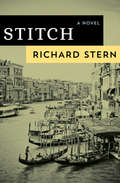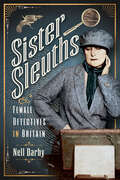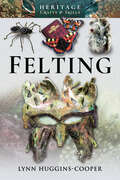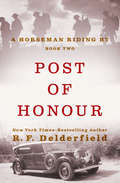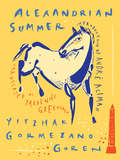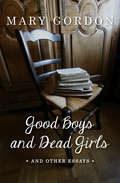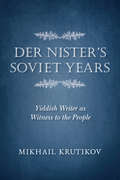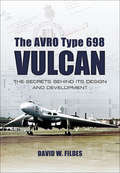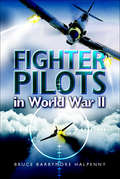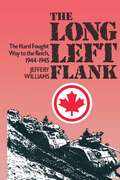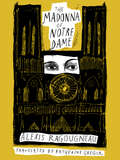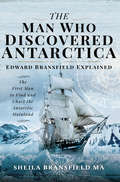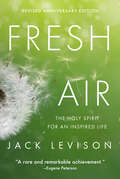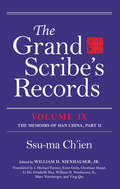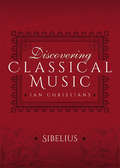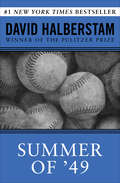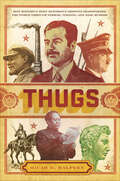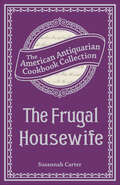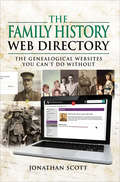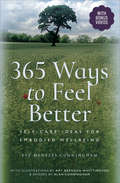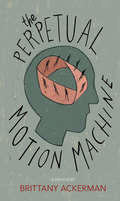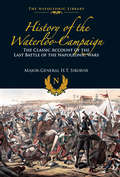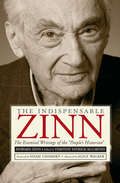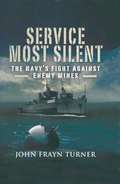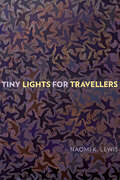- Table View
- List View
Stitch: A Novel
by Richard SternIn one of the world&’s most beautiful cities, an aging sculptor serves as an inspiration and a warning to two aspiring artists Pursuing literary glory, Edward Gunther gives up his job as a copywriter, sells everything he owns, and moves with his wife and three children from Chicago to Venice. But success does not come as quickly or as painlessly as Edward had hoped. During his first month in Italy, he struggles to get his essays published, argues with his wife about the family finances, and embarks on an unsteady affair with Nina Callahan, an American poet who insists on keeping him at arm&’s length. It seems that Edward&’s dreams will never come true, but when he discovers that Nina has befriended Thaddeus Stitch, the famous sculptor, a ray of hope appears. If anyone has the spark of genius, it is Stitch, who counted Yeats and Rilke as his friends and is inarguably one of the twentieth century&’s greatest artists. Perhaps some of the old man&’s creative energy will rub off on Edward, to whom a note of encouragement from such a luminary would mean everything. But Stitch is bitter and distant, preoccupied with his own doubts. Ancient now, he feels his talent slipping from his grasp and recognizes that the world is ready to move on without him. He knows that his masterpiece, a collection of figures and abstractions on an island in the Venetian Lagoon, will eventually disappear beneath the rising waters of the Adriatic. Over the course of a foggy winter, these three lonely souls try to come to terms with the direction of their lives and the meaning of their work. Written shortly after Richard Stern met Ezra Pound and widely recognized as a remarkable portrait of that inimitable literary lion, Stitch is an incisive and sympathetic novel about the joys and disappointments of a life devoted to art.
Sister Sleuths: Female Detectives in Britain (Trailblazing Women)
by Nell Darby“A unique and inherently fascinating history that brings a particular aspect of the role of women in law enforcement up out of obscurity.” —Midwest Book ReviewThe 1857 Divorce Act paved the way for a new career for women: that of the private detective. To divorce, you needed proof of adultery—and men soon realized that women were adept at infiltrating households and befriending wives, learning secrets and finding evidence. Over the course of the next century, women became increasingly confident in gaining work as private detectives, moving from largely unrecognized helpers to the police and to male detectives, to becoming owners of their own detective agencies. In fiction, they were depicted as exciting creatures needing money and work; in fact, they were of varying ages, backgrounds and marital status, seeking adventure and independence as much as money. Former actresses found that detective work utilized their skills at adopting different roles and disguises; former spiritualists were drafted to denounce frauds and stayed to become successful private eyes; and several female detectives became keen supporters of the women’s suffrage movement, having seen for themselves how career-minded women faced obstacles in British society.Sister Sleuths seeks to shed light on the groundbreaking women who have worked over the past century and a half to uncover wrongdoing and solve crimes.“The book is well-researched and provides numerous examples of women who either dabbled in investigation or made it their life’s work.” —Historical Novel Society“Absolutely enthralling stuff.” —Books Monthly
Felting (Heritage Crafts and Skills)
by Lynn Huggins-CooperA history and handbook explaining this ancient craft, including step-by-step instructions for beginners. This book offers a journey through the history of the ancient craft of felting from the earliest times, when people first discovered that animal fiber, moisture, and friction created a durable, warm fabric. Felt has been used for everything from apparel to housing; it has been used for practical, decorative, and even religious applications. This book looks at the rise and fall of felting through history and into the industrial era, including its importance to the hat-making industry. The second part of the book brings us to the modern—and some might say, golden—era of artisanal felting with interviews from felters and textile artists generously sharing their creative process. Finally, if you are inspired to try this fascinating craft, there are step-by-step instructions for both wet and needle felting, and a useful list of resources to get you started on your own felt-making journey.
Post of Honour (A Horseman Riding By #2)
by R. F. DelderfieldA rural English family endures as the Great War ends—and more storm clouds loom—in this saga from the New York Times–bestselling author of the Avenue novels. Through hard work and love of the land, Boer War vet Paul Craddock has transformed the sprawling West Country estate of Shallowford. With his wife and three children he enjoys a peaceful country life. But war has begun its inevitable march across England, and this remote corner of Devon cannot escape its cruel destruction. Young farmers of the village—barely men when they enlist—are dying in the field or coming home to a way of life that is rapidly disappearing. Yet as the Great War ends and another threatens to erupt, Craddock&’s faith and the strength he derives from his family will sustain him and his beloved village through trying, tumultuous times. Filled with vivid imagery and timeless emotion, this is the unforgettable story of a farming family and a vanishing way of life. Post of Honour is the second novel in R. F. Delderfield&’s A Horseman Riding By saga, which begins with Long Summer Day and continues with The Green Gauntlet.
Alexandrian Summer
by Yitzhak Gormezano Goren&“A powerful novel of tensions—sexual, familial, religious, and political . . . Alexandria—sensual and enchanting—shimmers in these pages&” (Dalia Sofer, national-bestselling author of The Septembers of Shiraz). Alexandrian Summer is the story of two Jewish families living their frenzied last days in the doomed cosmopolitan social whirl of Alexandria just before fleeing Egypt for Israel in 1951. The conventions of the Egyptian upper-middle class are laid bare in this dazzling novel, which exposes startling sexual hypocrisies and portrays a now vanished polyglot world of horse-racing, seaside promenades, and elegant nightclubs. Hamdi-Ali senior is an old-time patriarch with more than a dash of strong Turkish blood. His handsome elder son, a promising horse jockey, can&’t afford sexual frustration, as it leads him to overeat and imperil his career, but the woman he lusts after won&’t let him get beyond undoing a few buttons. Victor, the younger son, takes his pleasure with other boys. But the true heroine of the story—richly evoked in a pungent upstairs/downstairs mix—is the raucous, seductive city of Alexandria itself. &“Helps show why postwar Alexandria inspires nostalgia and avidity in seemingly everyone who knew it . . . The result is what summer reading should be: fast, carefree, visceral, and incipiently lubricious.&” —The New Yorker &“Luminous . . . One of the great triumphs of Alexandrian Summer is the richness of the evocation of this city and the multiple cultures pressed within it . . . A sultry eroticism pervades.&” —The Forward &“Gormezano Goren&’s characters are vividly depicted as they grow up or grow older in a city of conflicting loyalties, riven by resentment, ready to revolt. Readers will be transported.&” —Publishers Weekly &“A profound literary experience.&” —Ahshav
Good Boys and Dead Girls: And Other Essays
by Mary GordonA collection of dazzling and thought-provoking essays from lauded author Mary GordonMuch acclaimed for her novels, Mary Gordon is also a brilliant and wide-ranging essayist. Gathering together twenty-eight of her forays into nonfiction, Good Boys and Dead Girls provides a richly autobiographical context for the themes that mark her fiction, such as Irish-American life, Catholicism, embattled families, and the redeeming power of art. Many of the pieces offer insights into artists and other writers: There are admiring accounts of Edith Wharton, Stevie Smith, and Ford Madox Ford, and a piquant critique of the depiction of women by certain celebrated male novelists. Whatever the topic at hand, Gordon proves lively and illuminating company.
Der Nister's Soviet Years: Yiddish Writer as Witness to the People (Jews in Eastern Europe)
by Mikhail KrutikovA critical look at the later work of the Russian Jewish author in the Soviet Union and its significance to Russian and Jewish history.In Der Nister’s Soviet Years, author Mikhail Krutikov focuses on the second half of the dramatic writing career of Soviet Yiddish writer Der Nister, pen name of Pinhas Kahanovich (1884–1950). Krutikov follows Der Nister’s painful but ultimately successful literary transformation from his symbolist roots to social realism under severe ideological pressure from Soviet critics and authorities. This volume reveals how profoundly Der Nister was affected by the destruction of Jewish life during WWII and his own personal misfortunes. While Der Nister was writing a history of his generation, he was arrested for anti-government activities and died tragically from a botched surgery in the Gulag. Krutikov illustrates why Der Nister’s work is so important to understandings of Soviet literature, the Russian Revolution, and the catastrophic demise of the Jewish community under Stalin.“Krutikov’s book on Der Nister will serve an important function, offering a strong, well-researched, and well-organized analysis of six significant periods in Der Nister’s writing. I expect it to inspire a great many new readers of Der Nister, inside and outside of academia.” —Amelia M. Glaser, author of Jews and Ukrainians in Russia’s Literary Borderlands: From the Shtetl Fair to the Petersburg Bookshop“Among Soviet Yiddish writers, Der Nister occupies a unique place in literary history. Mikhail Krutikov’s meticulous analysis follows the transformation of the writer under the pressure of the Soviet ideological environment.” —Gennady Estraikh, author of Yiddish in the Cold War
The Avro Type 698 Vulcan: The Secrets Behind its Design and Development
by David W. FildesThe Avro Vulcan was the last V Bomber to see active service in its primary role during the Falklands conflict. It is the most popular of the three and one aircraft has recently become airborne again after a long period of rejuvenation. It has always been a major attraction at air shows throughout the world, attracting crowds who delight in its unique delta-wing shape and amazing maneuverability.The book examines the origins of the design, the prototypes and experimental aircraft, and goes on to explain the modifications that were made to the last of the breed.A leading member of the Avro Historical Society, the author has discovered many photographs and experimental design plans in their archives which are here published for the first time.
Fighter Pilots in World War II: True Stories of Frontline Air Combat
by Bruce Barrymore HalpennyThis is the story of Allied fighter pilots and the part they played in all the principal operational theatres of World War II. It also tells of life on the wartime airfield and how ground crew kept the aircraft ready for action either in the bitter cold of a Scottish winter or the sweltering heat of the North African desert. The book brings home the nervous strain caused by the constant readiness demanded by all those involved with fighter squadron combat and the intense comradeship created in each fighting unit.
The Long Left Flank: The Hard Fought Way to the Reich, 1944–1945
by Jeffery WilliamsWhen in August, 1944, the Allies broke out of Normandy, the world's attention became fixed on the dramatic British and American armoured thrusts into the Rhine. The war in Europe seemed all but over. Far to the left, along the flank of the Allied Expeditionary Force, almost unnoticed, a battle was beginning on whose outcome hung not only victory but the possibility of disaster Under-strength, neglected by Montogomery and denied by Eisenhower the supposed which he had promised, First Canadian Army paid an appalling price in casualties to clear the Channel coast and open up the great port of Antwerp. Commanded by General Harry Crerar , the army contained not only Canadians, but, for most of the campaign, more British troops then the Eighth Army at Alamein. Poles, Americans, Dutch, Belgians, Czechs and French served in it and were partnered in all their operations by the equally international No.84 Group, RAF. Their hard-won success in clearing the banks of the Scheldt and in capturing Walcheren Island was followed four months later by victory in the Rhineland. There, with almost every one of Montgomery's British Divisions under command, they smashed the best of what remained of the German Army and, with it, Hitler's last hope of defending the Rhine. The way was open for the Allies into the heart of the Reich. In the war's final phase, most of Crerar's British divisions were replaced with by Canadian formations newly arrived from their arduous campaign in Italy. Striking north and west after crossing the Rhine, they liberated Holland and drove east-ward into the heavily defended area of Germany. At war's end they had reached the Weser and were closing on the great naval bases of Emden and Wilhemshaven. Jeffery Williams won wide acclaim for his definitive biography Viscount Byng of Vimy. He brings the same assured touch to this lively and fast-moving account of a crucial aspect of the battle for North-West Europe which has hitherto been largely neglected by historians.
The Madonna of Notre Dame
by Alexis RagougneauThis murder mystery set in the Parisian cathedral is &“a twisted and riveting story . . . Highly original&” (Toronto Star). Fifty thousand believers and photo-hungry tourists jam into Notre Dame Cathedral on August 15 to celebrate the Feast of the Assumption. The next morning, a stunningly beautiful young woman clothed all in white kneels at prayer in a cathedral side chapel. But when an American tourist accidentally bumps against her, her body collapses. She has been murdered. The autopsy reveals disturbing details. Police investigators and priests search for the killer as they discover other truths about guilt and redemption within the walls of this soaring Paris refuge for the lost, the damned, and the saved. The suspect is a disturbed young man obsessed with the Virgin Mary who spends his days hallucinating in front of a Madonna. But someone else knows the true killer of the white-clad daughter of Algerian immigrants, in this thrilling novel of good and evil that illuminates shadowy corners of the world&’s most famous cathedral.
The Man Who Discovered Antarctica: Edward Bransfield Explained: The First Man to Find and Chart the Antarctic Mainland
by Sheila BransfieldThe definitive biography of the British naval officer who found the Antarctic shoreline in the early nineteeth century. Captain Cook claimed the honor of being the first man to sail into the Antarctic Ocean in 1773, which he circumnavigated the following year. Cook, though, did not see any land, and declared that there was no such thing as the Southern Continent. Fifty years later, an Irishman who&’d been impressed into the Royal Navy at eighteen, and risen through the ranks to the position of master, proved Cook wrong, discovering and charting parts of the Antarctic shoreline. He also discovered Elephant Island and Clarence Island, claiming them for the British Crown. Edward Bransfield&’s naval career included taking part in the Bombardment of Algiers in 1816 onboard the 50-gun warship HMS Severn. Then, in 1817, he was posted to the Royal Navy&’s Pacific Squadron off Valparaíso in Chile, and it was while he served there that the skipper of an English whaling ship, the Williams, was driven south by adverse winds and discovered what came to be known as the South Shetland Islands where Cook had said there was no land. Bransfield&’s superior officer, Captain Sherriff, decided to investigate further. He chartered Williams and sent Bransfield with two midshipmen and a ship&’s surgeon into the Antarctic—and the Irishman sailed into history. Despite many parts of Antarctica and an Antarctic survey vessel being named after him, and a Royal Mail commemorative stamp issued in his name, the full story of this remarkable man and his historic journey, have never been told—until now. Following decades of research, Sheila Bransfield MA, a member of the UK Antarctic Heritage Trust, has produced the definitive biography of one of Britain&’s greatest maritime explorers. The book also includes a foreword by the Trust&’s patron the Princess Royal. &“Bransfield&’s meticulous research gives us a detailed account of the daily routines of the Navy and the immense amount of maintenance required of a large wooden warship in the Age of Sail.&” —Historical Novel Society
Fresh Air: The Holy Spirit for an Inspired Life
by Jack Levison"Fresh Air offers careful examination of the Holy Spirit, all tangled up with a wide wonder."—Nichole Nordeman "I've often asked pastors, 'Who is the most neglected person of the Trinity?' They always answer, 'The Holy Spirit.' In this lively and—well—Spirit-filled book, Jack Levison enjoys the exploits of the Holy Spirit throughout scripture, provoking a fresh encounter with God. Jack is uniquely qualified to lead us, combining his scholarly understanding of scripture with his deep affection for the church, both mainline and Pentecostal. No one will think about the Holy Spirit in the same way after reading Jack's book." —Will Willimon "Jack Levison's book is the most biblical, wide-ranging, innovative, and refreshing book on the Holy Spirit in years. The Spirit is here de-programmed and set loose. You may be surprised in every chapter, I know I was." —Scot McKnight "Fresh Air is, well, a breath of fresh air. Jack Levison fuses an accurate but unpretentious examination of the Holy Spirit in Scripture with a lively and generous style that invites the entire Christian community, regardless of label, to embrace God's Spirit in the everyday ordinariness of life." —Eugene Peterson "FRESH AIR is exactly what its title promises: a lively, fresh study of the theology of the Holy Spirit by a brilliant and spirited theologian. If there is such a thing as poignant Christian midrash, then this surely is it." —Phyllis Tickle "People told me Jack Levison was a great teacher, and when I read this book I realized why. His excitement is infectious; he tells a great story; he sets little-known biblical passages on fire and drills down to unimagined depths in well-known ones. He has a boyish enthusiasm, but his account of the holy spirit – and what the spirit can do for whole churches, not just individuals! – is mature, seasoned, challenging and wise. His scholarship is spot on, his human warmth and Christian compassion are everywhere. An unbeatable combination." —N. T. Wright
The Grand Scribe's Records, Volume IX: The Memoirs of Han China, Part II (The Memoirs of Han China #9)
by Ssu-ma Ch'ienA remarkable document of ancient Chinese history: “[An] indispensable addition to modern sinology.” —China Review InternationalThis volume of The Grand Scribe’s Records includes the second segment of Han-dynasty memoirs and deals primarily with men who lived and served under Emperor Wu (r. 141–87 B.C.). The lead chapter presents a parallel biography of two ancient physicians, Pien Ch’üeh and Ts’ang Kung, providing a transition between the founding of the Han dynasty and its heyday under Wu. The account of Liu P’i is framed by the great rebellion he led in 154 B.C. and the remaining chapters trace the careers of court favorites, depict the tribulations of an ill-fated general, discuss the Han’s greatest enemy, the Hsiung-nu, and provide accounts of two great generals who fought them. The final memoir is structured around memorials by two strategists who attempted to lead Emperor Wu into negotiations with the Hsiung-nu, a policy that Ssu-ma Ch’ien himself supported.
Discovering Classical Music: Sibelius (Discovering Classical Music)
by Ian Christians"I recommend this book wholeheartedly to new music lovers" Sir Charles Groves CBE Thanks to Nigel Kennedy and Pavarotti, millions of people have recently discovered that classical music is a highly enjoyable experience, perhaps contrary to their expectations. But the world of classical music can be highly intimidating and confusing. Ian Christians, for many years a passionate believer in broadening the interest in classical music, has developed a unique approach, designed to make it as easy as possible for both newcomers to classical music and those who have started down the path to explore with confidence. Discovering Classical Music concentrates on the greatest composers. The author takes you step-by-step into their most approachable music and, in some cases, boldly into some of the greatest works traditionally considered too difficult for newcomers. Rarely does a book offer such potential for continued enjoyment.This volume concentrates on the life, personality and music of Edward William Elgar.
Summer of '49: Summer Of '49, October 1964, The Amateurs, Playing For Keeps
by David HalberstamThis #1 bestselling baseball classic of the Yankees-Red Sox rivalry is &“dazzling . . . heart-stopping . . . A celebration of a vanished heroic age&” (The New York Times Book Review). The summer of 1949: It was baseball&’s Golden Age and the year Joe DiMaggio&’s New York Yankees were locked in a soon-to-be classic battle with Ted Williams&’s Boston Red Sox for the American League pennant. As postwar America looked for a unifying moment, the greatest players in baseball history brought their rivalry to the field, captivating the American public through the heart-pounding final moments of the season. This expansive story captures an era, incorporating profiles of the players and their families, fans, broadcasters, baseball executives, and sportswriters. Riveting in its blend of powerful detail and exhilarating narrative, The Summer of &’49 is Pulitzer Prize winner David Halberstam&’s engrossing look at not only a sports rivalry, but a time when America&’s very identity was wrapped up in its beloved national game. This ebook features an extended biography of David Halberstam.
Thugs: How History's Most Notorious Despots Transformed the World through Terror, Tyranny, and Mass Murder
by Micah D. HalpernAn incisive look into the lives, politics, and horrible deeds of fifty-six of history’s most notorious world leaders—and how they shaped our world for the worst.For the most notorious leaders in the history of the world, evil is more than just a moment of weakness—it’s a way of life.For every noble king, righteous emperor, and peace-loving president, history seems to serve up a double portion of murderous pharaohs, deranged dictators, or corrupt czars. Thugs probes this dark and twisted side of raw human power—from France’s King Louis XIV to China’s Mao Tse-Tung and everywhere in between. It’s a fascinating peek into the lives of the rich and infamous, the sour crème de la crème.Some, like Herod the Great, earned villainous reputations for slaughtering their own family members and countrymen. Others, like Egypt’s King Farouk, were almost laughable in their misdeeds, amassing the world’s largest collection of pornography. Then there are those leaders, such as Hitler, who committed acts of such unspeakable evil that their names are uttered as curses.From Filipino first lady Imelda Marcos’s bullet-proof bras to African strongman Ide Amin’s bizarre fixation with all things Scottish, Micah D. Halpern turns the yellowed pages of history and contemporary news accounts to profile the bewildering, outrageous, horrific, gut-wrenching, zany, and tragicomic behavior of the world’s worst leaders.Praise for Thugs“Written in short, easy-to-digest sentences, columnist and historian Halpern fills his brief sketches with colorful, terrible details in the manner of that rare, beloved history teacher whose lectures stir rapture in a nap-prone student body.” —Publishers Weekly
The Frugal Housewife (American Antiquarian Cookbook Collection)
by Susannah CarterThe Frugal Housewife, or Complete Woman Cook was the only cookbook published in the United States during the 50-year period before publication of American Cookery by Amelia Simmons—the first truly American cookbook. Originally published in the United Kingdom, Susannah Carter&’s work was hugely successful, and after achieving best-seller status in that market, it was published for an American audience. Again, it was well-received, this time by colonial housewives. The first American printing actually included plates engraved by Paul Revere. The Frugal Housewife contains a fascinating array of recipes including: Baked Indian Pudding, Eel Pie, Peach Sweetmeats, Maple Beer, Method of Destroying the Putrid Smell which Meat Acquires during Hot Weather, and Spruce Beer out of Shed Spruce. The cookbook and author Carter are credited with influencing author Amelia Simmons, who wrote the first American-specific cookbook, but the The Frugal Housewife, or Complete Woman Cook is historically significant in its own worth as well for its recipes, social information, and time period when it was published. Later US editions included some Americanization for New World ingredients and methods. This edition of The Frugal Housewife, or Complete Woman Cook was reproduced by permission from the volume in the collection of the American Antiquarian Society, Worcester, Massachusetts. Founded in 1812 by Isaiah Thomas, a Revolutionary War patriot and successful printer and publisher, the Society is a research library documenting the life of Americans from the colonial era through 1876. The Society collects, preserves, and makes available as complete a record as possible of the printed materials from the early American experience. The cookbook collection includes approximately 1,100 volumes.
The Family History Web Directory: The Genealogical Websites You Can't Do Without
by Jonathan ScottJonathan Scott's Family History Web Directory is an information-packed reference guide that distils the best of the internet into one easy-to-use format. Themed sections cover different topics, from 'getting started' to specific occupations, and there is an index reproducing all the websites in A-Z order. His handbook is a vital source for less experienced researchers, and a handy aide-memoire for more seasoned campaigners. Web addresses are listed by topic, then in order of importance and usefulness. An extraordinary range of sites that will interest family historians is included from records of births and deaths, tax, crime and religion, to military records and records of work and occupations. Also featured are sites that give information about archives, blogs and forums, social networking and sharing research.The internet can be an overwhelming place for the genealogist. Jonathan Scott's book provides readers with online shortcuts, tips for getting the best from well-known websites, plus the details of all kinds of lesser-known and hard-to-find sources.
365 Ways to Feel Better: Self-Care Ideas for Embodied Wellbeing
by Eve Menezes Cunningham&“Pull[s] together 366 daily steps to help you live a happier, healthier, freer, and more fulfilled life. Let [Eve] be your inspiring guide for your year&” (Nick Williams, bestselling author of The Work We Were Born to Do). 365 Ways to Feel Better offers simple but effective tools for each day of the year. Eve Menezes Cunningham integrates her background in coaching, counseling, yoga, and other therapies to share practical tools for mind, body, heart, and soul. With an overall aim of supporting people in feeling better in all areas of their lives, Eve encourages the reader to learn to trust in their own capacity to heal and feel better, with a playful approach to their self-care. From goal setting to inner child work, chakras to beneficial yoga poses, breath practices to psychological tools, meditation techniques to aura cleansing, this book offers a taste of a comprehensive range of mind-body tools to help you boost your health and wellbeing. 365 Ways to Feel Better is for anyone who wants to boost their wellbeing in a holistic, side-effect-free way. Self-help fans will enjoy it, but also complementary therapists, energy workers, yoga instructors and yogis, counselors, coaches, and more. &“This book will transform your life. Radical self-care in easy baby steps, what&’s not to love?&” —Suzy Greaves, author of The Big Peace: Find Yourself Without Going Anywhere &“A fabulous book. So very well thought out, planned and executed and with a wonderful accessible yet respectful style.&” —Debra Jinks, coauthor of Personal Consultancy: A Model for Integrating Counselling and Coaching
The Perpetual Motion Machine: A Memoir
by Brittany AckermanA memoir exploring a young woman&’s troubled childhood, her bond with her older brother, and the toll of drugs and alcohol on their lives. Inspired by a brother&’s high school science project—a perpetual motion machine that could save the world—The Perpetual Motion Machine is a memoir in essays that attempts to save a sibling by depicting the visceral pain that accompanies longing for some past impossibility. The collection has been a science project in its study of memory, in the calculation and plotting of the moments that make up a childhood. The preparation has been &“in the field&” in that it is built upon the gathering of lived experience; the evidence is photo albums, family interviews, and anecdotes from friends. The project has been one giant experiment—to see if they can all make it out alive.&“Full of hard-won wisdom, beautifully written and deeply moving . . . an exquisite chronicle of family and trauma and hope and longing, and announces Brittany Ackerman as an exciting new voice in letters.&” —Alan Heathcock, author of VOLT and 40 &“[An] instantly engaging and wildly engrossing memoir. . . . Her prose is accessible and affecting, and her family story is exquisite in its luminous detail and intimacy, full of heartbreak and humor.&” ―Davy Rothbart, author of My Heart is an Idiot, creator of FOUND Magazine, and contributor to This American Life&“Told in simple, spare language, Ackerman&’s story is powerful not only for the story it tells, but also for the eloquent silences and chronological ruptures that symbolize the painfully fractured nature of her life and that of her brother. A brief but poignant memoir.&” —Kirkus Reviews
History of the Waterloo Campaign: The Classic Account of the Last Battle of the Napoleonic Wars (The Napoleonic Library)
by H.T. SiborneCaptain William Siborne became an ensign in the 9th Foot in 1813 and was sent to France in 1815 as part of a battalion despatched to reinforce Wellingtons army. A notable topographer, after the events that year he was commissioned to create a scale model of the Battle of Waterloo, for which he carried out extensive research, writing to officers in the allied forces present to obtain information. The subsequent correspondence amounted to the largest single collection of primary source material on the subject ever assembled. After he had completed his model, which is today on public display in the National Army Museum in London, he used the mass of information he had gathered to produce his History of the Waterloo Campaign, which was at the time the most detailed account of the operations of 1815 and is still considered a classic work on the subject.Sibornes history of Waterloo, the latest addition to Frontline's growing Napoleonic Library, is essential and gripping reading for all those who are interested in how this famous battle was fought and won.
The Indispensable Zinn: The Essential Writings of the "People's Historian"
by Howard ZinnA &“well-chosen anthology of the radical historian&’s prodigious output,&” from A People&’s History of the United States and lesser known sources (Kirkus Reviews). When Howard Zinn died in early 2010, millions of Americans mourned the loss of one of the nation&’s foremost intellectual and political guides; a historian, activist, and truth-teller who, in the words of the New York Times&’s Bob Herbert, &“peel[ed] back the rosy veneer of much of American history to reveal sordid realities that had remained hidden for too long.&” A collection designed to highlight Zinn&’s essential writings, The Indispensable Zinn includes excerpts from Zinn&’s bestselling A People&’s History of the United States; his memoir, You Can&’t Be Neutral on a Moving Train; his inspiring writings on the civil rights movement, and the full text of his celebrated play, Marx in Soho. Noted historian and activist Timothy Patrick McCarthy provides essential historical and biographical context for each selection. With a foreword by Noam Chomsky and an afterword from Zinn&’s former Spellman College student and longtime friend, Alice Walker, The Indispensable Zinn is both a fitting tribute to the legacy of a man whose &“work changed the way millions of people saw the past,&” and a powerful and accessible introduction for anyone coming to Zinn&’s essential body of work for the first time (Noam Chomsky).
Service Most Silent: The Navy's Fight Against Enemy Mines
by John Frayn TurnerFrom the very outset of war Nazi Germany demonstrated its determination and ability to lay siege to the British Isles by the laying of mines in shipping lanes. Losses to both merchant ships and naval vessels became a serious factor. If supplies continued to be lost by a combination of U-Boat and mine attacks the very survival of the nation was at risk. Finding counter-measures to the German mine offensive was thus a top priority. The responsibility for this vital work rested with a small group of highly skilled and courageous naval specialists based at HMS Vernon, the RN's mine and torpedo shore-base at Portsmouth. Ranged against them was a growing and ingenious array of weapons: magnetic, acoustic, oyster, booby-trap mines to name but four varieties. Some were laid by boat, others dropped from the air. The story of HMS Vernon's contribution led by men such as Commander JGD Ouvry DSO and Captain R L Lewis DSO and many other courageous figures has been written by John Frayn Turner, the distinguished historian who served with them.He adopts a fast moving style to describe the near continuous struggle to detect, understand and master the best efforts of the German war machine. He brings home the constant deadly danger faced by these highly skilled and dedicated men.
Tiny Lights for Travellers (Wayfarer)
by Naomi K. LewisGovernor General’s Award Finalist: A “wry, moving” memoir of a woman retracing her grandfather’s escape from Amsterdam during the Holocaust (Alison Pick, Booker-nominated author of Between Gods).Why couldn’t I occupy the world as those model-looking women did, with their flowing hair, pulling their tiny bright suitcases as if to say, I just arrived from elsewhere, and I already belong here, and this sidewalk belongs to me?When her marriage suddenly ends, and a diary documenting her beloved Opa’s escape from the Nazi-occupied Netherlands in the summer of 1942 is discovered, Naomi Lewis decides to retrace his route to freedom. Travelling alone from Amsterdam to Lyon, she discovers family secrets and her own narrative as a second-generation Jewish Canadian. With vulnerability, humour, and wisdom, Lewis’s memoir of her journey, interspersed with excerpts from her grandfather’s diary, asks tough questions about her identity as a secular Jew, the accuracy of family stories, and the impact of the Holocaust on subsequent generations.
